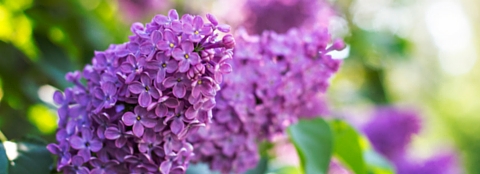May Northern Garden Checklist

Flower Care:
- Allow spring flowering bulb leaves to naturally yellow and dry before removing. The leaves produce the needed energy for next year’s flower display.
- Wait for the air and soil to warm to plant warm season annuals like coleus, begonias, and impatiens. Fertilize with Milorganite® when planting to give your annuals all the nutrients they need to grow big and beautiful.
- Dig and divide overgrown summer and fall blooming perennials. Amend the soil with compost and Milorganite fertilizer before planting the divisions back in their original spot and new locations.
- Put stakes, peony cages and trellises in place as these plants begin to emerge. You’ll find it easier to train young plants through the cages or onto the stakes than manipulate mature plants into submission.
- Thin garden phlox, bee balm and other powdery mildew susceptible plants when stems are 8 inches tall. Remove 1/4 to 1/3 of the stems. This will increase light and air to the plant, decreasing the risk of powdery mildew.
Vegetable Garden Planting and Harvest:
- Plant seeds of cucumber, melons, squash, and lima beans when the soil has warmed. Select shorter season varieties of squash and melons that will reach maturity and be ready for harvest before the first frost.
- Wait for the air and soil to warm to plant warm season vegetables like tomatoes, peppers, herbs, and eggplants. The warm soil and air will help get these plants off to a robust start.
- Fertilize vegetables and herbs with Milorganite. The slow release organic-nitrogen feeds plants evenly and gradually. This nurtures the roots, which in turn develop more robust stems and leaves. Other fertilizers force unnecessary top growth, which makes for skinny plants with reduced yields.
Tree and Shrub Planting and Care:
- Prune spring-flowering shrubs as soon as they are done blooming. Finish pruning by early June so that the plants have enough time to set flower buds for next spring.
- Continue planting balled-and-burlapped and container plants throughout the growing season.
- Dig the planting hole for trees and shrubs twice the diameter and the same depth or shallower than the rootball. Make sure the root flare of trees and crown of shrubs is at the soil surface.
- Fertilize with Milorganite when planting or transplanting trees and shrubs. Milorganite's non-burning formula slowly releases nutrients to feed your shrubs and trees for 8-10 weeks.
- Reduce your workload and improve the plant’s health by creating mulch beds around your trees and shrubs. You’ll eliminate the need for hand trimming, improve the health of your plants and keep damaging weed whips and mowers away from these plants.

